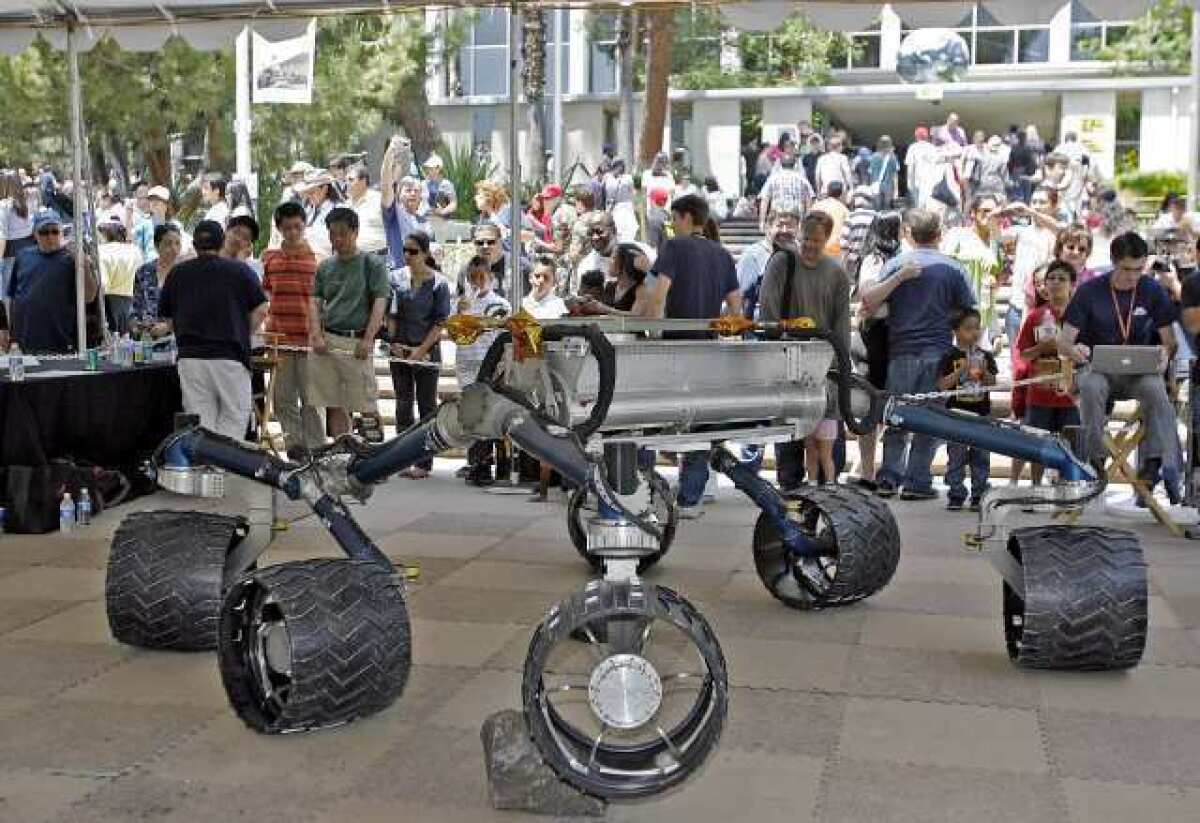Space budget takes a hit

- Share via
President Obama’s budget proposal, unveiled on Wednesday, would cut funding for planetary exploration at NASA by roughly $200 million, although it still funds several high profile missions being planned out of the Jet Propulsion Laboratory in La Cañada Flintridge.
The proposed budget includes $1.2 billion for NASA’s planetary science division, down from the $1.4 billion in its 2013 budget.
The division is especially important to JPL because it includes locally developed missions such as the Curiosity rover project and a planned mission to Jupiter’s moon, Europa.
At a news conference Wednesday, NASA administrator Charles Bolden said that the $17.7 billion apportioned to the agency as a whole in the president’s latest budget proposal would ensure the United States remained the world leader in space exploration. But it would not be without challenges.
“The budget reflects fiscal realities of our time,” Bolden said. “We had to make some tough choices.”
Some of those decisions — particularly the roughly $200-million hit to the planetary sciences division — were clearly unacceptable to some, including one of JPL’s most ardent cheerleaders in Congress, Rep. Adam Schiff (D-Burbank).
The congressman was part of the effort to restore funding to the space exploration programs this year, and said in an email that he was prepared to pursue similar steps again.
“Just months after Curiosity’s spectacular landing on Mars, the administration and NASA have again produced a budget that shortchanges one of America’s most successful, scientifically valuable, and popular space endeavors: the exploration of our solar system,” Schiff said.
But the president’s budget proposal is by no means the last word, and the final funding figure will also be affected by the across-the-board federal spending cuts, known as sequestration. The president’s last budget included similar cuts, but Congress restored the majority of the funding.
The funding priorities also reflect the ever-changing nature of space exploration.
Jim Green, director of the planetary science division, said in an email that budget requirements follow the natural cycle of mission launches and planning at JPL.
“Like anything in this business, planetary missions go through cycles of development, launch and operations,” he said
And over the last several years, JPL has pushed through several major missions in rapid succession.
“Due to that, our budget naturally goes down after launches while we begin new missions and investigate other mission concepts,” Green said.
The budget includes $234 million for Mars exploration, including plans for another rover mission slated for 2020, and continued funding for plans already in the works.
The proposed budget also includes $50 million for the Mars Atmosphere and Volatile Evolution, or MAVEN, mission, which is set to launch in November in a spacecraft navigated by JPL.
In addition, it includes $193 million for the InSight mission to send a lander to study Mars’ deep interior in 2016. The science team’s primary investigators are based at JPL.
JPL spokeswoman Veronica McGregor said in a statement that she was pleased with the overall spending priorities in the budget proposal.
“I’m also thankful that Congress has recognized the importance of planetary exploration and has worked hard to restore it to a healthy state, and I am hopeful this trend will continue,” she said.
--
Follow Daniel Siegal on Google+ and on Twitter: @Daniel_Siegal.